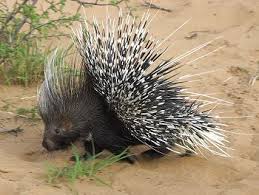I have been away too much over the past few weeks and am overjoyed to be back on the farm for a few weeks before I have to do any serious travel again. The last post talked about the Bulbinia fragens, the harbinger of spring. Spring here does not arrive over many weeks as it does in Europe. Within one unseasonably warm week I have returned to find the farm full of new flowers. This is building up to the height of the flowering season for Fynbos and the next few months are going to see an explosion of life. I’m already struggling to keep up – this blog will be quite long and I’ll be trying to keep regular posts so that we capture as much as possible of what’s happening on the mountain.
I’ve been looking out for this flower – it’s a dear friend, one of the first that made me realise the special nature of our fynbos bulbs. This photo is quite deceptive as this is a tiny iris-like flower – each petal not much bigger than my fingernail. This is Moraea tripelata and it has started to flower all over the farm. I spotted it first thing when I went running with the dogs on Saturday morning.

Moraea tripetala
Peter then took us up to see the work he’s been doing clearing alien vegetation, especially the Port Jackson trees that choke the river. Every winter when the planting on the farm is done he attached this for a few weeks. Two winters ago we cleared around the waterfall and what was a chocked up watercourse that you couldn’t see is now full of vibrant fynbos life. He has just opened up this area, so dense with trees that you couldn’t get into it and has found the spot where the two rivers that run through the farm meet, before tumbling down the mountain to add their waters to the mighty Berg River that runs through the Paarl valley below us.

Clearing alien trees along the river

The place where the two rivers meet
In the late afternoon I took some guests on our first “Flower safari” of the year. All we did was walk down the front drive and we were enchanted with the profusion of flowers we came across, many old friends that we have posted before, and quite a few new ones.
First of all we came across this tiny white gladiolus. I first saw it at the top of the bank, which gives an idea of scale.

Unknown gladiolus
Then I realised they are growing along the side of the road. I cannot find this one in my book at all – not even in the bulb encyclopedia. I’ve done this before, failed to identify a flower and then realised I’m not looking properly at the description, so if I do realise what it is, I’ll post it. It is quite enchanting, with a delicate fragrance, like so many of the gladioli.

Gladiolus unidentified
Then we came across another example of the bell like pink Erica that I posted last week, this time a lot closer to home.

Erica with pink bells
There are masses of these on the drive, and masses of what I guess to be Erica daphniflora, in colours of green, white, red and a particularly vibrant pink.

Erica, probably daphniflora

Erica, probably daphniflora
The Oxalis are still flowering away, these ones in white and pink profuse along the bank and the lands still covered in the yellow ones.

Oxalis
The next new find was this Erica – you can see it’s quite distinctive in the way it grow and flowers and the little white bells have the brown anthers exposed at the end. This was very attractive in the late evening light.

Erica, unidentified
Another new find is this flowering shrub which is common all over the farm. I have always assumed it to be Cape Confetti, but with my evolving botannical eye I think it is more likely to be Adenandra villas, possily . I’m sure I will have many more occassions to photograph this stunning shrub.

Cape confetti – coleonem album or adenandra villas?
As I was showing our guests one of the Protea nerifolias along the road we saw this little bud. We were delighted as it means these glorious proteas are going to continue to flower for some time.

The bud of a Protea nerifolia
The Felicia is such a wonderful flower. This is the first one I have seen this year and it will flower from now until the summer, along with the Lobostemum it is one of our commonest shrubs. That makes the first sighting of these pretty lilac flowers with their yellow centres no less exciting, both for their own sake and the promise of more spring flowers to come.

Felicia filifolia
This warm weather won’t be with us for long, with temperatures expected to plummet during the week. Luckily up here on the mountain we almost never go below 5 degrees, so the flowers will be safe. In the valley below it can freeze, but the moutain seems to hold the heat of summer and protects us from the coldest weather.
We are coming into the best season for sunsets. Yet another amazing sunset this evening as I was finishing some more traditional gardening and the mountains behind turned a glorious orangey-pink.

 in
in






































































